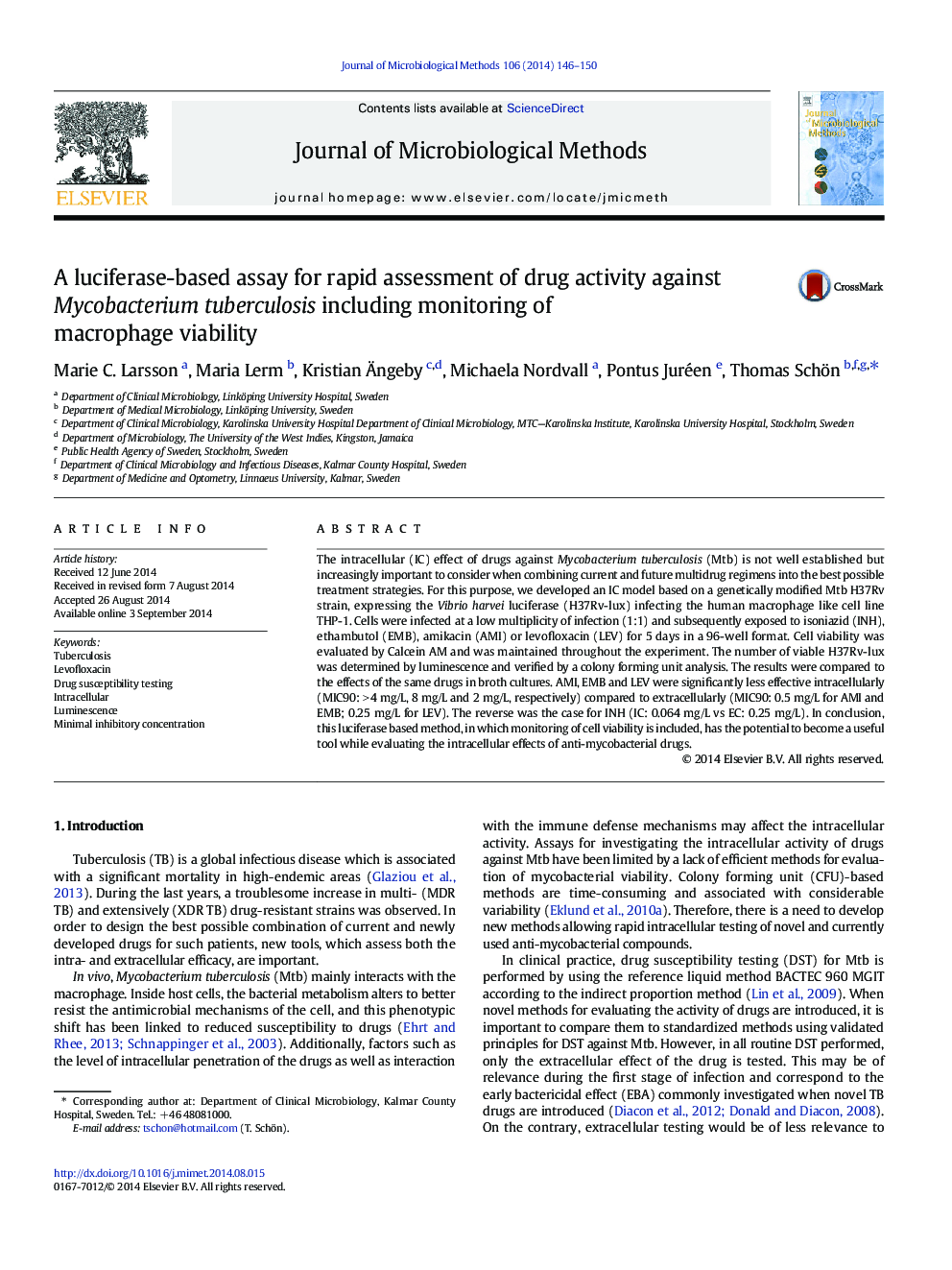| Article ID | Journal | Published Year | Pages | File Type |
|---|---|---|---|---|
| 2089971 | Journal of Microbiological Methods | 2014 | 5 Pages |
•A macrophage model to measure the drug activity against M. tuberculosis was developed.•Amikacin and levofloxacin were less effective intracellularly than extracellularly.•Isoniazid was effective both in infected macrophages and extracellularly.•Macrophage viability was evaluated and maintained during the assay.•This luminescence assay is useful for evaluating the intracellular effects of drugs.
The intracellular (IC) effect of drugs against Mycobacterium tuberculosis (Mtb) is not well established but increasingly important to consider when combining current and future multidrug regimens into the best possible treatment strategies. For this purpose, we developed an IC model based on a genetically modified Mtb H37Rv strain, expressing the Vibrio harvei luciferase (H37Rv-lux) infecting the human macrophage like cell line THP-1. Cells were infected at a low multiplicity of infection (1:1) and subsequently exposed to isoniazid (INH), ethambutol (EMB), amikacin (AMI) or levofloxacin (LEV) for 5 days in a 96-well format. Cell viability was evaluated by Calcein AM and was maintained throughout the experiment. The number of viable H37Rv-lux was determined by luminescence and verified by a colony forming unit analysis. The results were compared to the effects of the same drugs in broth cultures. AMI, EMB and LEV were significantly less effective intracellularly (MIC90: > 4 mg/L, 8 mg/L and 2 mg/L, respectively) compared to extracellularly (MIC90: 0.5 mg/L for AMI and EMB; 0.25 mg/L for LEV). The reverse was the case for INH (IC: 0.064 mg/L vs EC: 0.25 mg/L). In conclusion, this luciferase based method, in which monitoring of cell viability is included, has the potential to become a useful tool while evaluating the intracellular effects of anti-mycobacterial drugs.
